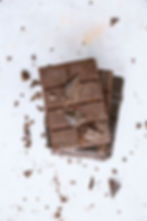Our bodies are made in such an incredible way, and we are already equipped with all that we need in order to detoxify and excrete toxins; however, we must view this in context of an individuals metabolic state.
The first step in healing the body is to properly nourish the body. While I go in depth about macronutrients and micronutrients on the Health Foundations Roadmap, I feel as though it's important to share actionable steps you can take towards getting a few key nutrients in daily.
(First of all, I do want to give a disclaimer. Everyone has a different mineral status, and stress/environment truly can alter minerals and put an individual in a place where they experience more dysfunction when trying to add in more specific minerals. An HTMA (hair tissue mineral analysis) can be a helpful tool to assess mineral status, and I often use these in my practice to get a baseline of where someone is starting from.)
For most, taking the steps below to get enough potassium, magnesium, and sodium daily will provide a great foundation for healing.
Sodium: it's important to get enough sodium daily. By salting proteins (or entire snacks/entrées) with a dash of salt, and/or by enjoying an adrenal cocktail with a pinch of salt daily, you will be able to meet your sodium needs for the day. I suggest Morton's Flake Salt or Crucial Four salt. The average women needs around 2,300 mg of salt a day. This is equivalent to one tsp. of salt a day. There might be times where you find yourself craving more salt than usual, which can be normal around the menstrual phase, as sodium needs do increase. Extreme salt cravings can also indicate low potassium levels/and or low magnesium levels. Tip: to keep an eye on salt intake, check the nutrition facts on the food you are eating. There's naturally occurring sodium in many food, and most packaged foods contain sodium as well.

Potassium: just how it's important to get enough sodium daily, it's important to get enough potassium daily. Some of the best sources include fresh whole fruit, coconut water, watermelon juice, seafood, and dairy. Many people cannot handle many fruits in one day, or they become bloated while drinking coconut water due to bacterial overgrowth in the small intestine. Because of this, cream of tarter in an adrenal cocktail can be a great option. Aim to get 2,000 mg of potassium in a day. To track this, you can use Chronometer (a free website online) to make sure that you are getting enough. My favorite sources are fresh navel oranges, watermelon juice and dairy.

Magnesium: many times, the importance of magnesium is overlooked. Because our soil is depleted of nutrients, it's important to both add in magnesium rich foods (like sprouted grains and even cocoa), but also understand that we will not get enough from food alone.
While there are many kids of magnesium, most do not absorb well - hence the laxative effect of so many inexpensive magnesiums. Chelated magnesium (Magnesium Lysinate Glycinate Chelate) is the type of meagnesium that I suggest most often to clients. Klaire Labs, Country Life and Dr.'s Best has great options for this kind of magnesium.
A combination of eating some sprouted grains, trying a magnesium supplement, and also taking magnesium salt baths (Life Flo magnesium flakes are great!) is a great way to get enough magnesium. If someone is low in sodium, it can be helpful to add in more sodium for a few months prior to trying magnesium supplementation. If you try magnesium, and you do not feel well, it would be worth trying holding off on the magnesium until your body adjusts to having adequate sodium.

To hear an even more in-depth overview of this topic, watch the video that goes along with the article. As always, if you have any questions, be sure to ask in the weekly Q&A!
